Cheng-Yaw Low
Recognizability Embedding Enhancement for Very Low-Resolution Face Recognition and Quality Estimation
Apr 20, 2023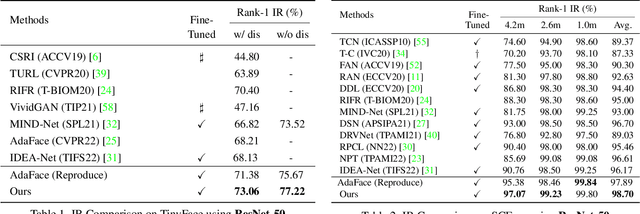
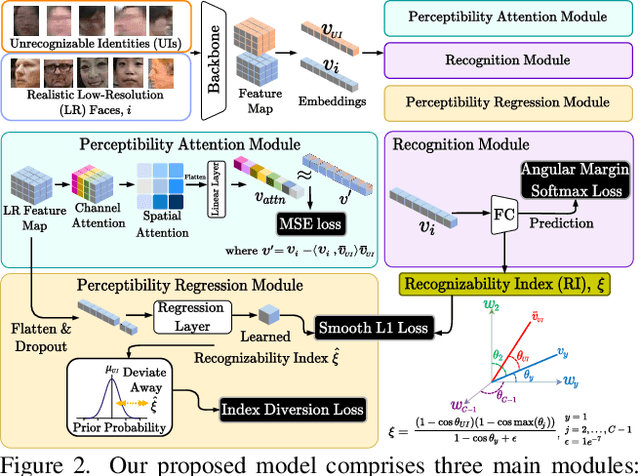

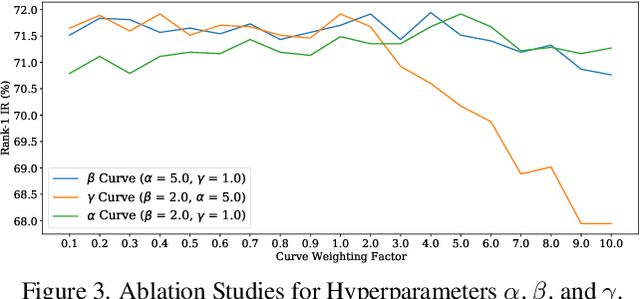
Abstract:Very low-resolution face recognition (VLRFR) poses unique challenges, such as tiny regions of interest and poor resolution due to extreme standoff distance or wide viewing angle of the acquisition devices. In this paper, we study principled approaches to elevate the recognizability of a face in the embedding space instead of the visual quality. We first formulate a robust learning-based face recognizability measure, namely recognizability index (RI), based on two criteria: (i) proximity of each face embedding against the unrecognizable faces cluster center and (ii) closeness of each face embedding against its positive and negative class prototypes. We then devise an index diversion loss to push the hard-to-recognize face embedding with low RI away from unrecognizable faces cluster to boost the RI, which reflects better recognizability. Additionally, a perceptibility attention mechanism is introduced to attend to the most recognizable face regions, which offers better explanatory and discriminative traits for embedding learning. Our proposed model is trained end-to-end and simultaneously serves recognizability-aware embedding learning and face quality estimation. To address VLRFR, our extensive evaluations on three challenging low-resolution datasets and face quality assessment demonstrate the superiority of the proposed model over the state-of-the-art methods.
Stacking-Based Deep Neural Network: Deep Analytic Network for Pattern Classification
Nov 17, 2018



Abstract:Stacking-based deep neural network (S-DNN) is aggregated with pluralities of basic learning modules, one after another, to synthesize a deep neural network (DNN) alternative for pattern classification. Contrary to the DNNs trained end to end by backpropagation (BP), each S-DNN layer, i.e., a self-learnable module, is to be trained decisively and independently without BP intervention. In this paper, a ridge regression-based S-DNN, dubbed deep analytic network (DAN), along with its kernelization (K-DAN), are devised for multilayer feature re-learning from the pre-extracted baseline features and the structured features. Our theoretical formulation demonstrates that DAN/K-DAN re-learn by perturbing the intra/inter-class variations, apart from diminishing the prediction errors. We scrutinize the DAN/K-DAN performance for pattern classification on datasets of varying domains - faces, handwritten digits, generic objects, to name a few. Unlike the typical BP-optimized DNNs to be trained from gigantic datasets by GPU, we disclose that DAN/K-DAN are trainable using only CPU even for small-scale training sets. Our experimental results disclose that DAN/K-DAN outperform the present S-DNNs and also the BP-trained DNNs, including multiplayer perceptron, deep belief network, etc., without data augmentation applied.
Stacking-based Deep Neural Network: Deep Analytic Network on Convolutional Spectral Histogram Features
May 21, 2017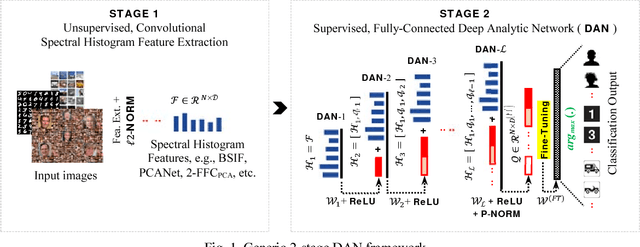
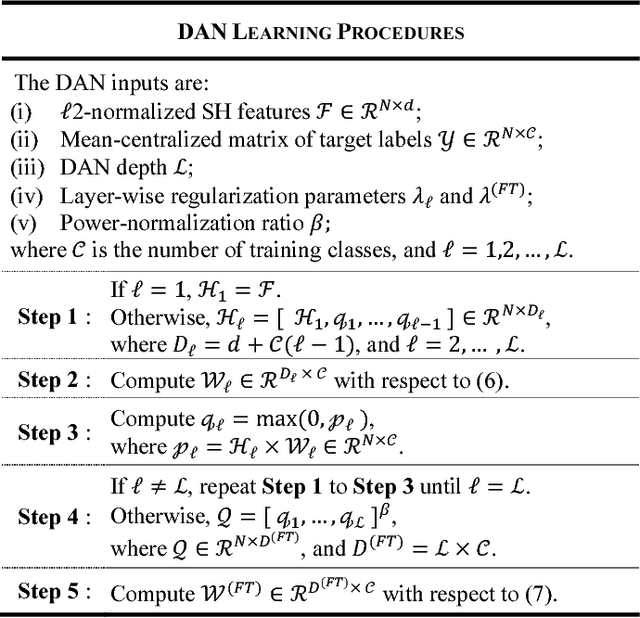

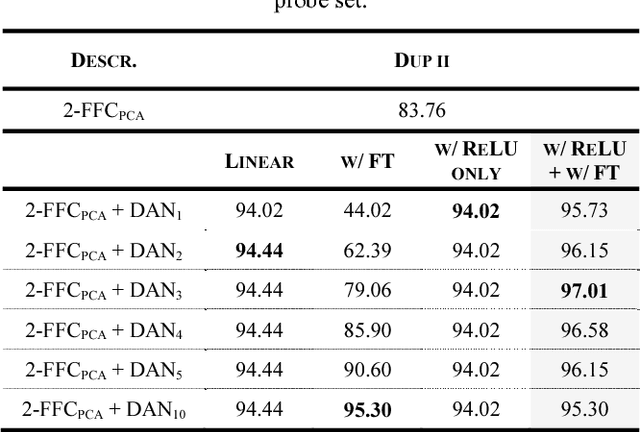
Abstract:Stacking-based deep neural network (S-DNN), in general, denotes a deep neural network (DNN) resemblance in terms of its very deep, feedforward network architecture. The typical S-DNN aggregates a variable number of individually learnable modules in series to assemble a DNN-alike alternative to the targeted object recognition tasks. This work likewise devises an S-DNN instantiation, dubbed deep analytic network (DAN), on top of the spectral histogram (SH) features. The DAN learning principle relies on ridge regression, and some key DNN constituents, specifically, rectified linear unit, fine-tuning, and normalization. The DAN aptitude is scrutinized on three repositories of varying domains, including FERET (faces), MNIST (handwritten digits), and CIFAR10 (natural objects). The empirical results unveil that DAN escalates the SH baseline performance over a sufficiently deep layer.
 Add to Chrome
Add to Chrome Add to Firefox
Add to Firefox Add to Edge
Add to Edge